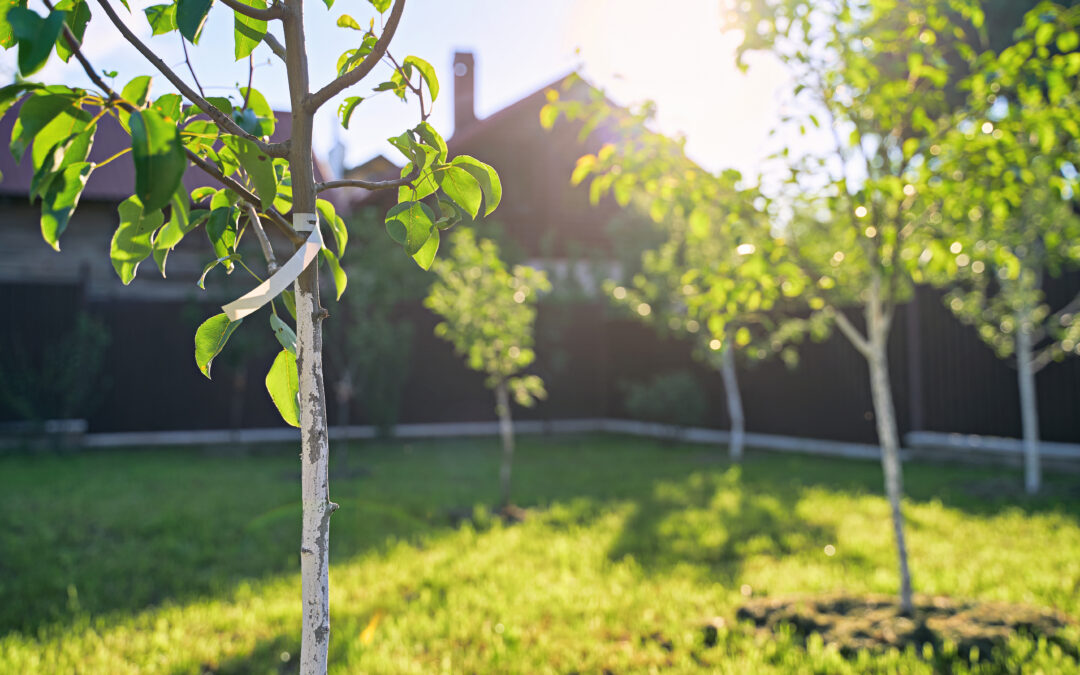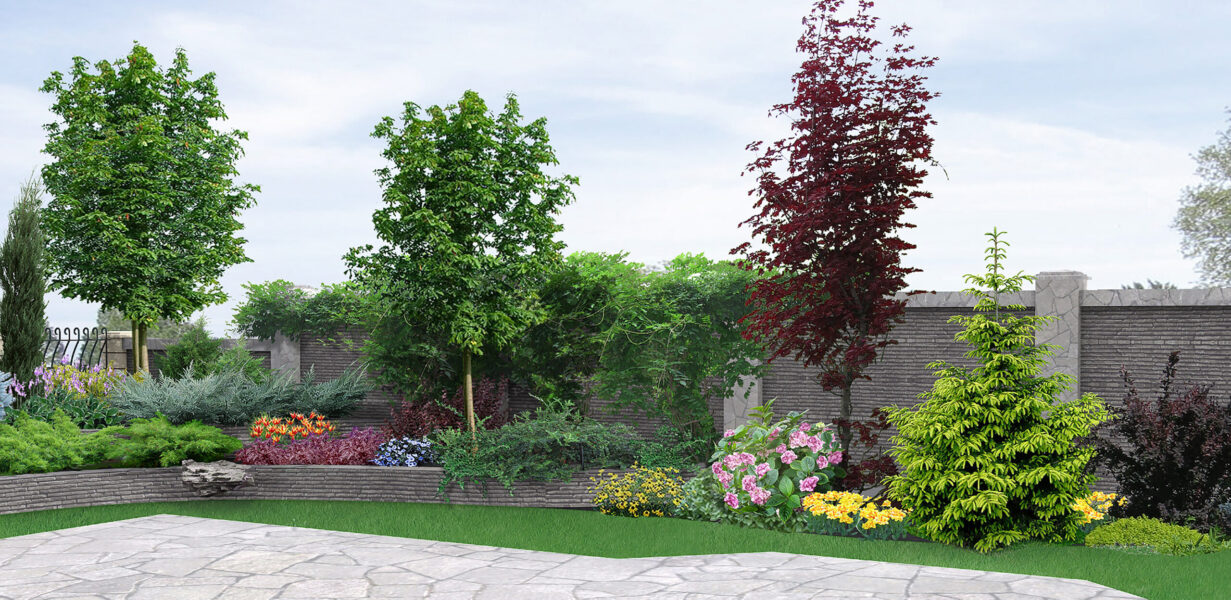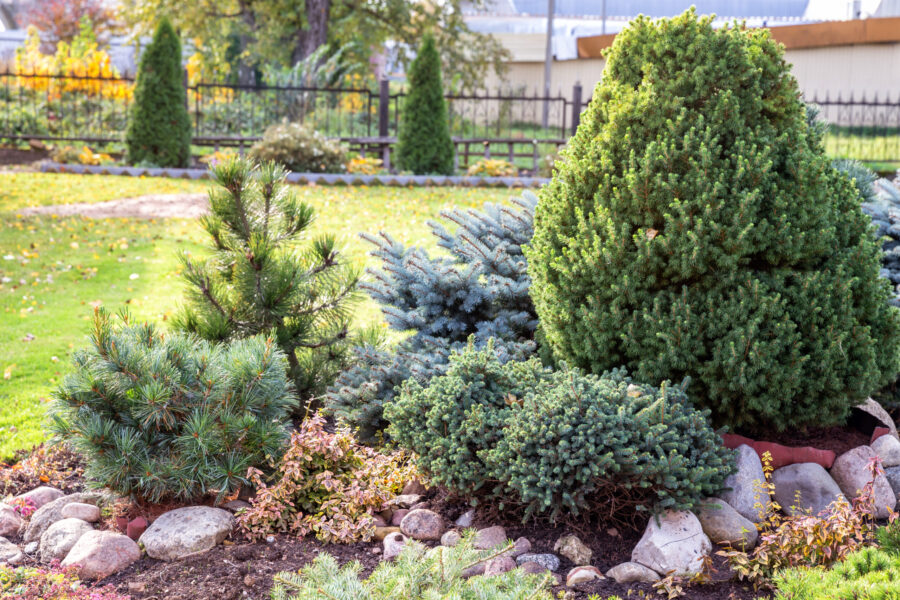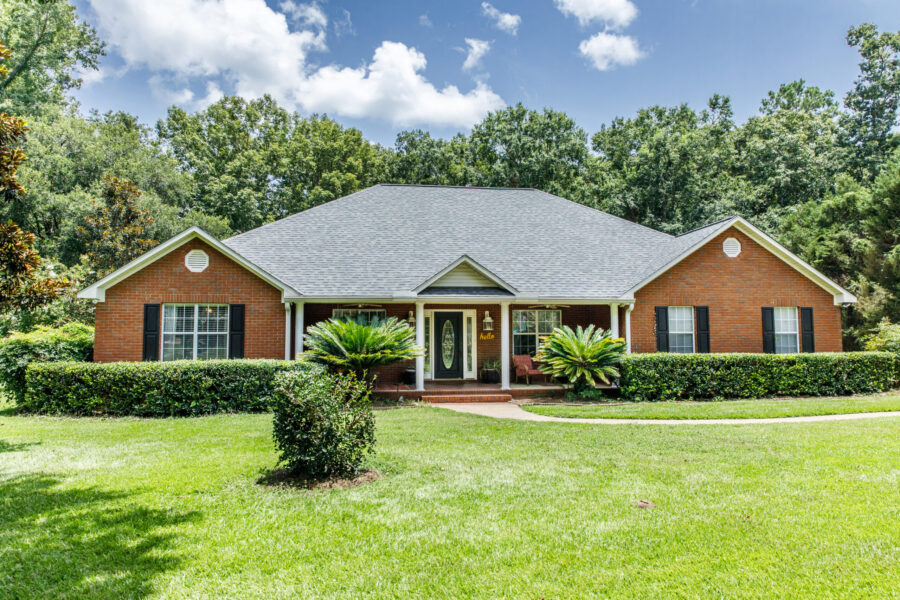Trees are one of those elements in your yard and garden that become the backbone of your outdoor living. Think about it: tree-climbing, tree swings, and homes to nests and wildlife. Some trees burst forth with spring or summer blooms, some provide fruits and nuts, and many are the fodder of dreams and poems.
You can probably remember a tree from somewhere in your own history. It might be something fun like the location of a treehouse. It could be the one you climbed and fell out of, resulting in a casted arm for several weeks. Or it could be the old oak silhouetted at the top of the hill where you turned to drive down the gravel road to your grandma’s farm. We all have some connection to a tree.
When is the best time to plant trees?
Fall (August through mid-October) is a great time to plant most trees and shrubs! In fact, it is probably the best time of year to plant. No one explains it better than the Morton Arboretum in Lisle, Illinois:
The fall moisture (rains) helps the trees and shrubs establish their root systems. When the air temperatures are cooler than the soil, new root growth is encouraged without new top growth. The result is a stronger, better developed root system for the next spring when the plant begins to grow.
Of course, there are certain trees and shrubs that are slow-growing and are better planted in spring, such as magnolia, larch, hemlock, willow and sweetgum, among others. But for alder, ash, buckeye, catalpa, crabapple, hackberry, hawthorn, honey locust. elm, linden, maple, sycamore, pines, and spruces, fall is your prime time. Note that deciduous shrubs are easily planted in fall, too.
That means that fall can be one of the busiest times for gardeners – at least those who plan and are in tune with the needs of these primary plantings in every garden. With that fact in place, the next big question is how to choose the best tree for your garden or yard location.
Here at Aisling View, we help our clients make good choices about trees because we have lots of experience in building gardens and yard landscapes that thrive. But there are people who want to do do-it-themselves. We understand, so here are some things you will need to consider:
How to choose the right tree
There are several factors to consider when choosing trees, but the two most important are:
- Tree placement
- Tree selection
You see, with the proper placement and selection, trees might very well outlive their owners. Some like the General Sherman Tree in Sequoia National Park is the largest tree anywhere in the world and is estimated to be 2,000 years old. The Hangman’s Elm in Manhattan dates back for sure to the Revolutionary War period. Charleston’s Angel Oak Tree is more than 400 years old and out west off the 17-Mile Drive on the Monterey Peninsula, the Lone Cypress has beat all the odds to stand on a cliff over the ocean for about 250 years.
Take the time to select the right tree for the right location and you might just be creating something that is known and remembered by generations!
Consider Tree Function
Large, healthy trees improve property value and make your outdoor space a pleasant place to spend your summer days and evenings.
Trees are not only pleasant, but are also very practical. They can help conserve energy, shading your home to cool it in the summer, while allowing the winter sun to warm it. Evergreens can provide windbreaks or privacy. Trees provide environmental protection by decreasing the glare of pavement, reducing runoff, filtering pollution, and adding oxygen to the air.
Consider tree form and size
This can be directly correlated to the function, even if the function is to just look pretty through each of the seasons.
Trees come in a variety of shapes and, like other plants, grow to different heights in maturity. So, if you want a tree that will shade your home, you will plant one that grows tall with dense foliage. If you have power lines extending over your site, you will want a shorter tree, one that spreads more horizontally than vertically. Some are more decorative and used as ornamentals like a pink dogwood, a crabapple, a Japanese maple or a redbud.
Consider site conditions
To ensure your tree will thrive, you must coordinate the tree, its needs, and what the site where you want it to be located provides. It’s a long list, but you must consider:
- Soil conditions
- Exposure (sun and wind)
- Drainage
- Space constraints
- Hardiness zone
- Amount of human activity in the area
- Insect and disease susceptibility
This is where the tree and the location come together for success – or failure. You might love how a crepe myrtle looks when you visit the Carolinas on summer vacation. However, when you return to the Midwest to plant one in your yard, you will be sorely disappointed in the outcome, that is, if you can get it to grow here at all! Not every tree can survive every climate and you need to understand what will thrive in your area.
If you feel stressed by the thousands of options and factors to pull together when choosing and locating trees or shrubs, don’t make the mistake of closing your eyes and just pointing at something at a local nursery. Call Aisling View at 317-636-9408 to help you.







Recent Comments